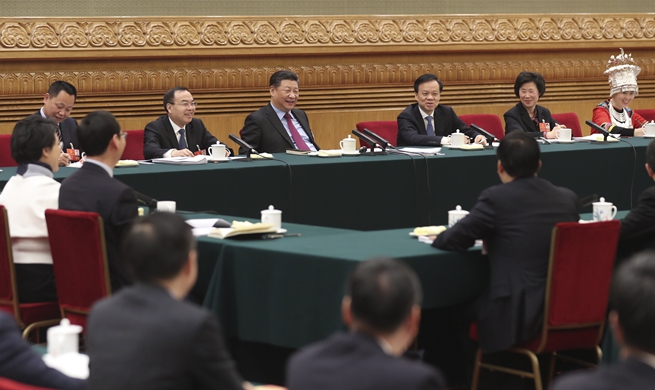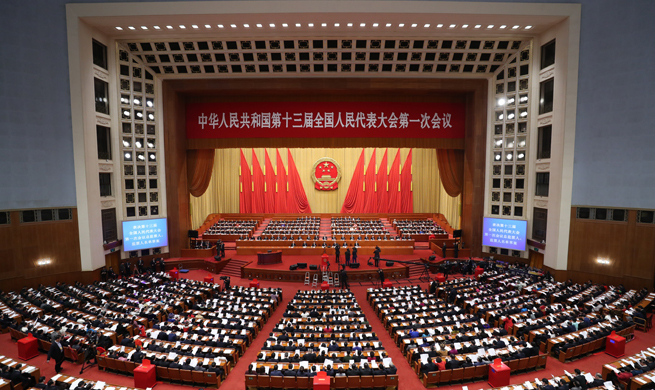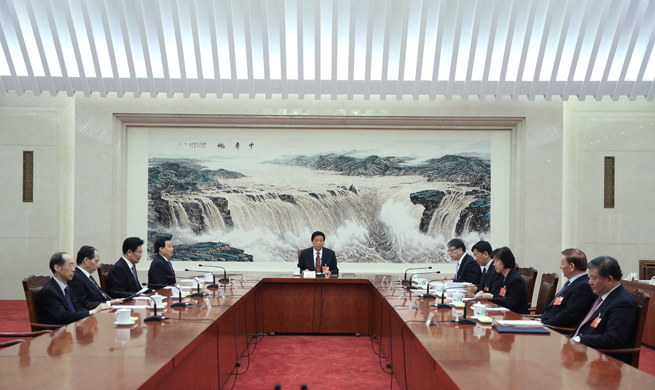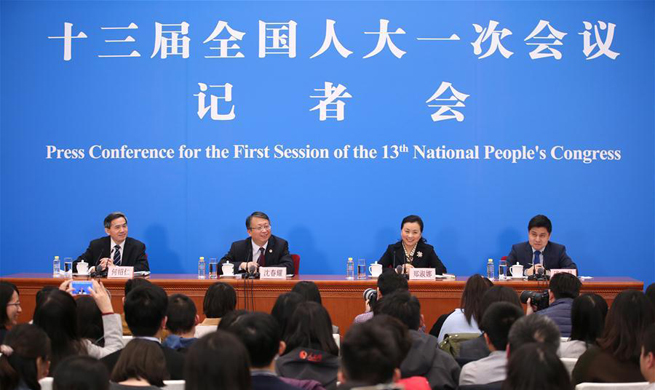by Wesley W. Busch, Liu Liwei
HOUSTON, March 10 (Xinhua) -- The world is crunching toward a new energy future which is promising for both producers and consumers, but insufficient investments, unstable geopolitical factors and the cost of applying new technology to daily life add uncertainties to the future.
U.S. EMBRACING NEW ENERGY REALISM
U.S. Secretary of Energy Rick Perry, as he spoke to those attending CERAWeek held by IHS Markit on March 5-9, said the United States and the world are now witnessing a new energy realism.
He said the new energy realism rests on the fact that America is amid an incredible energy revolution.
"This dramatic process is a decisive break from the 1970s, when America followed a flawed policy," he said.
According to Perry, the United States has moved from an era of perceived energy scarcity to one of unprecedented energy abundance. "That abundance is the result of technology and innovation," he said.
In an interview with Xinhua during CERAWeek, Secretary General of the International Energy Forum (IEF) Sun Xiansheng said the United States used to be a major importer of oil, but there has been a big change since American shale oil production increased sharply in recent years which resulted in the reduction of oil import from the Middle East.
"The U.S. shale production plays an important role in keeping market balance," Sun said, adding that the world consumption center has shifted from the West to the East.
Sun believed the new trend has a significant impact on global economic development and provides a chance for both the United States and China to have a closer cooperation in energy.
The International Energy Agency (IEA) released an energy outlook at CERAWeek, which indicates that China and India are leading the oil demand, driven by their robust economic growths.
GLOBAL UNCERTAINTY REMAINS
The uncertainty mainly lies in the question of whether there will be sufficient investments into the oil industry that will deflect the possibility of bottlenecks in the supply chain as demand continues to grow.
Fatih Birol, executive director of the IEA, on more than one occasion, told attendees of CERAWeek that investments need to be made or there could be a bottleneck in the supply of crude oil in three years.
Investment into the industry had two consecutive years when there was 25 percent or more decline on an annual basis -- 2014 to 2015 and again 2015 to 2016. Since that time, investments have risen, but certainly not to the level before 2014.
According to Birol, the world loses 3 million barrels a day because of the decline of aging fields.
Mohammad Senusi Barkindo, secretary general of the Organization of Petroleum Exporting Countries (OPEC), agreed with Birol on the assessment that investments must be made.
"We have seen sharp contraction in investment, especially long-cycle projects both onshore and offshore," Barkindo said, adding "2018 not looking very positive at the moment."
The OPEC secretary general raised a call to arms for the industry.
"The global industry needs to focus on this imagined threat, because we are sowing the seeds for a possible or believed future energy crisis. That is not in the interest of this global economy," he said.
Crude oil prices are also sensitive to geopolitical factors.
With growing energy demand, world engines need to import more energy from other countries and regions and have to face the challenge of geopolitical sophistication and uncertainties.
RENEWABLES ON THE TRACK
Today, fossil fuels are about 81 percent of the fuel mix in the world. Leading industry organizations believe that number will decrease, but to what level is unknown.
Most industry leaders agree that the pollution problem associated with fossil fuels is caused by the generation of power. Many power plants have transitioned from the use of coal to natural gas, which is much cleaner.
For instance, China is converting its power generation from coal-fueled plants to gas-fueled plants.
Furthermore, renewables are beginning to have more of an impact in the fuel mix and appear to play a growing role in the years to come.
The emergence of renewable energy is a positive global trend, but more time is needed to develop technology and management in this field, Sun said.
"Personally, I believe renewable and clean energy is a positive trend in the future. The only question is how fast it will grow. If all the countries work together and make more efforts, the day may come quicker," Sun said.
According to Sun, over the last two to three years, the cost of renewable energy has decreased significantly thanks to technological development. However, there remain huge cost challenges in this field.
China is leading the way in promoting renewables and electric vehicles (EVs).
Executive Vice President of the State Grid Corporation of China (SGCC) Wang Min said at CERAWeek that SGCC has built the world's largest Internet of Vehicles (IoV) network in terms of coverage and the number of devices, connecting 17 charging facility operators and providing access to about 170,000 charging docks.
Besides using cutting-edge technologies, such as big data and cloud computing, the SGCC has also achieved universal plug-in and payment methods for most charging stations nationwide. EV owners can use a mobile phone app to locate nearby charging docks.
The quick charging facilities have been built by the SGCC to cover 150 cities across China and along a 31,000-km stretch of highways.
The five-day CERAWeek, which ended Friday here in Houston, is an annual energy meeting held by the London-based information company IHS Markit featuring prominent speakers from energy, technology and financial sectors.
This year's meeting was attended by more than 3,000 guests from over 50 countries and regions.















